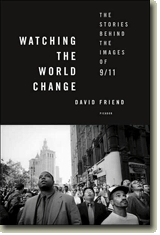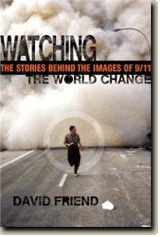« Previous · Home · Next »
November 9, 2008
WATCHING THE WORLD CHANGE, REDUX
On Friday, I posted the following piece on VanityFair.com. It feels particularly appropriate in the context of this book blog.

Obama’s Leap – Both Quantum and Quaint
Barack Obama’s victory symbolized quantum-leap change. But in terms of the media’s role on election night—and the public’s consumption of that coverage—many elements were throwbacks to a by-gone era.
Granted, the mesmerized electorate was busy multi-tasking in a typical 21st century frenzy. We followed the state-by-state tallies on laptops or BlackBerries as we text-messaged on cell phones as we diddled our remote controls to surf our hi-def monitors, watching out of the corners of our eyes as commentators used touch-screen maps to swoop in on precincts in contested counties.
Even so, there were moments when the victory seemed so special, so transcendent in relation to the times, that the audience shifted to more established, even antiquated media platforms, seeking a sense of community and commonality that is sometimes lost in the disparate niches of the Net. The night of the election, we turned to mass media: election-coverage TV viewership that night—70 million-plus—approached the 80 million that tuned in to prime-time news outlets the night of the September 11 attacks. (On 9/11, an estimated 2 billion people—a third of the planet—watched television news.) People across the country spontaneously flocked to the streets, as they had on V-E and V-J Days, gathering on campus quads and town plazas, in Chicago’s Grant Park and New York’s Times Square, where massive screens relayed images to massive crowds.
There were wonderful anecdotal reports: a small assembly of citizens, many of them African-American, were seen huddled at the Lincoln Memorial, of all places, listening to their radios, of all things. Chris Whipple, of ABC News, points out that at key moments, TV reverted from moving pictures to stills, as if to slow things down in order to preserve and savor the moment. “I found it reassuring,” he says, “that so many of the television news segments that night and the next day relied on still photographs. They switched from video coverage to photojournalism,” echoing that old reliable, the photo essay, as if channeling the spirit of the weekly Life magazine in its heyday.
And on the morning after the election, all across the land, there was a run on newspapers. People wanted to save a tangible record of the day as a keepsake; the fickle flicker of handheld devices and computer screens and plasma TVs just wouldn’t do. History demanded permanence. And the medium that many considered the most likely candidate for life-support had its banner day, quite literally. Newspaper front pages were the hard, irrefutable evidence that on a special, hallowed day, barriers had fallen and a nation had risen up.
In a poignant confluence of old media and new on election night, editor and curator Russell Burrows learned of the passing of President John F. Kennedy’s chief White House photographer, Cecil Stoughton. At 8:10 p.m. that evening, just after many East Coast polls were closing, Burrows sent out a group e-mail to a small circle of friends in the photo community, informing them of Stoughton’s death, at age 88. Among those on his list were eight former White House photographers. “What’s really surprising,” says Burrows, “is that most of them replied within minutes.” These men and women were sharing their condolences, yes. Stoughton had been a giant of another era, and a friend to many. But, at the same time, they were jacked into their laptops, watching the world change.


